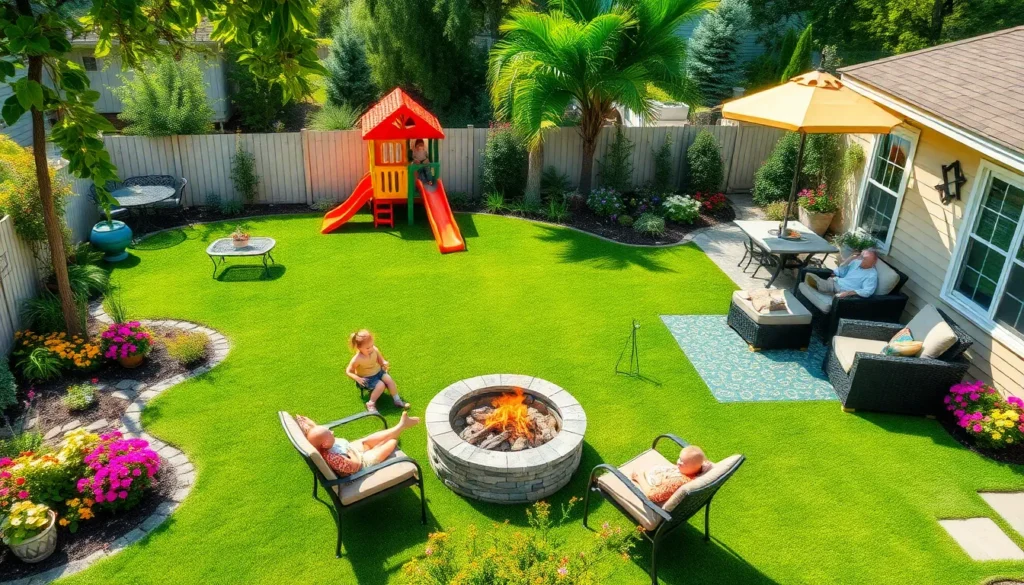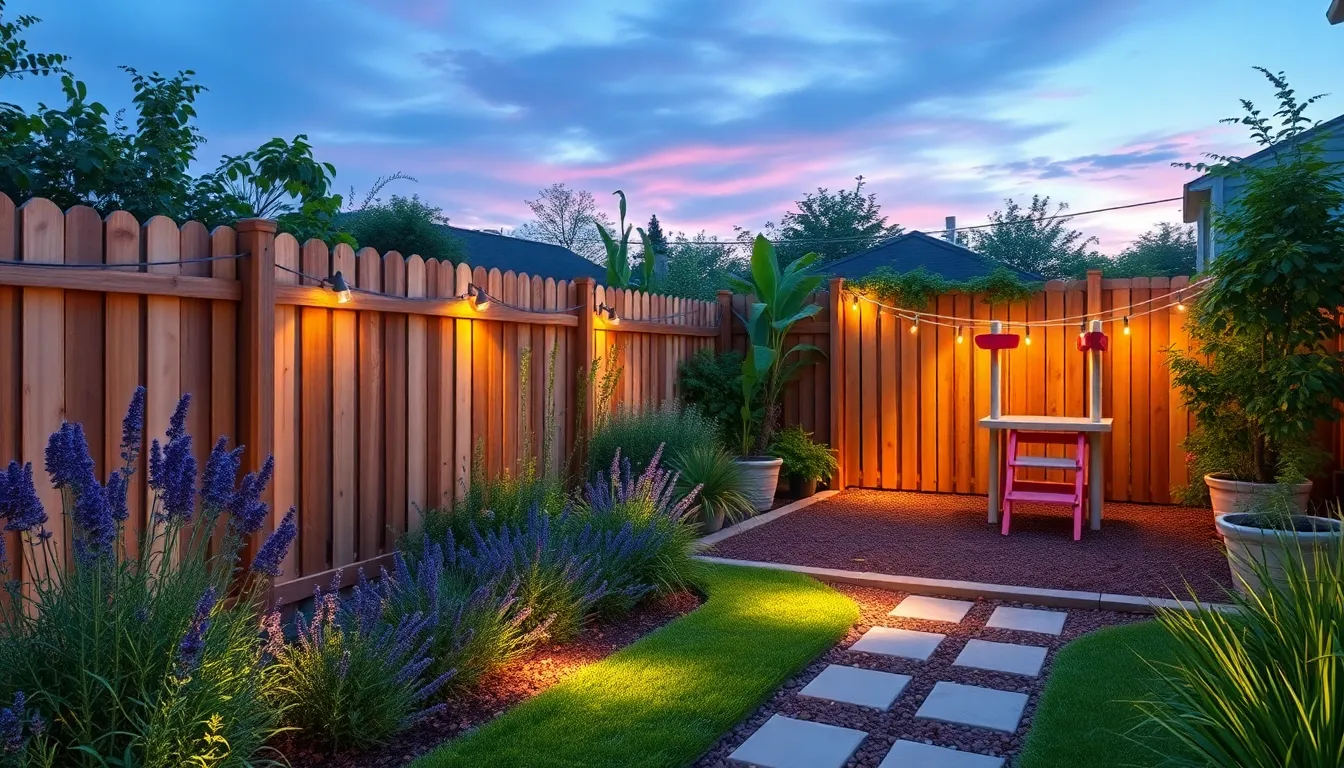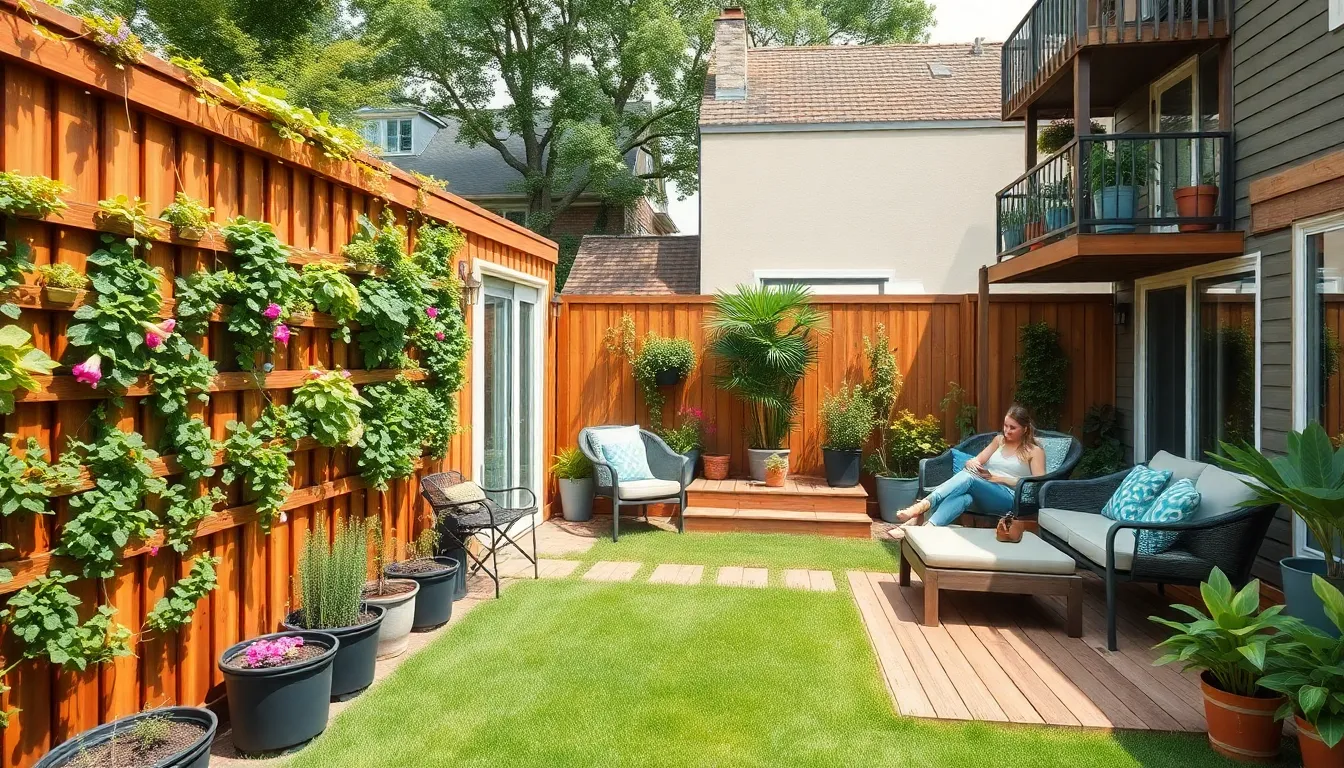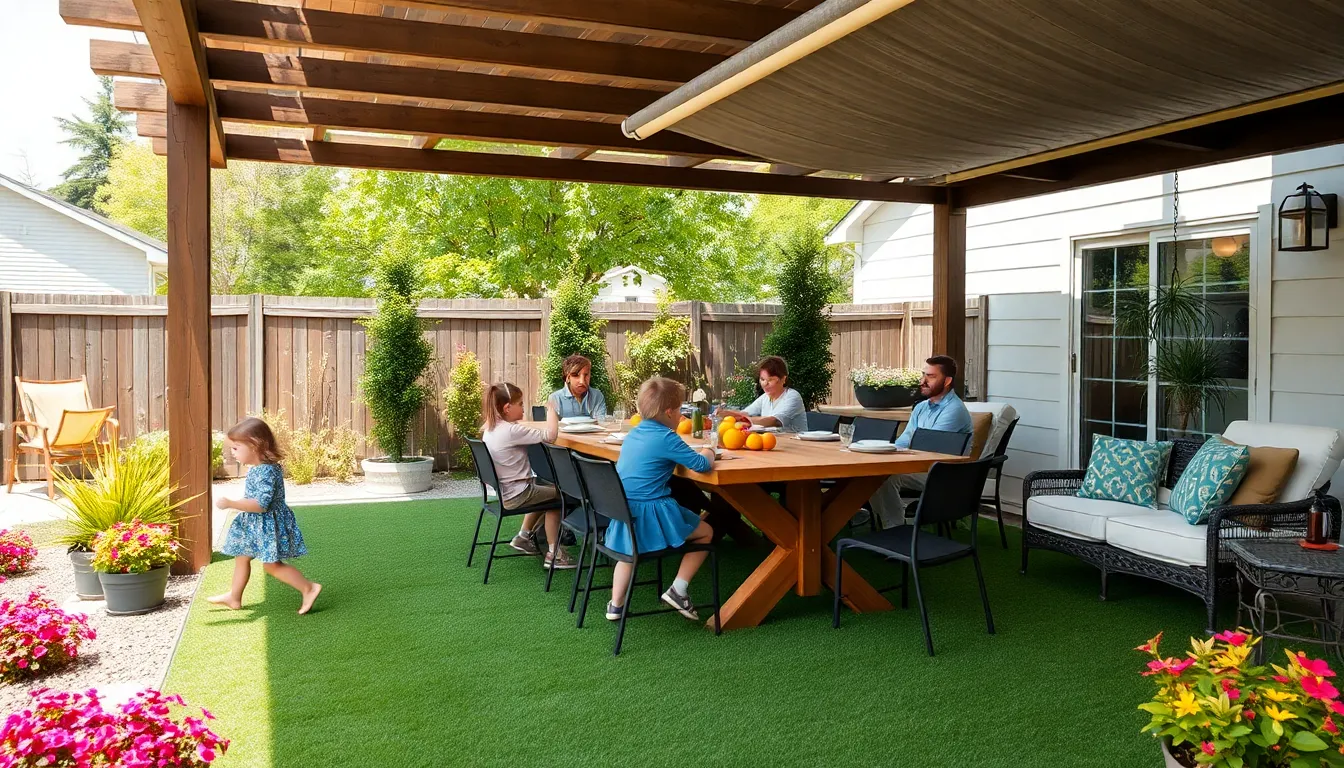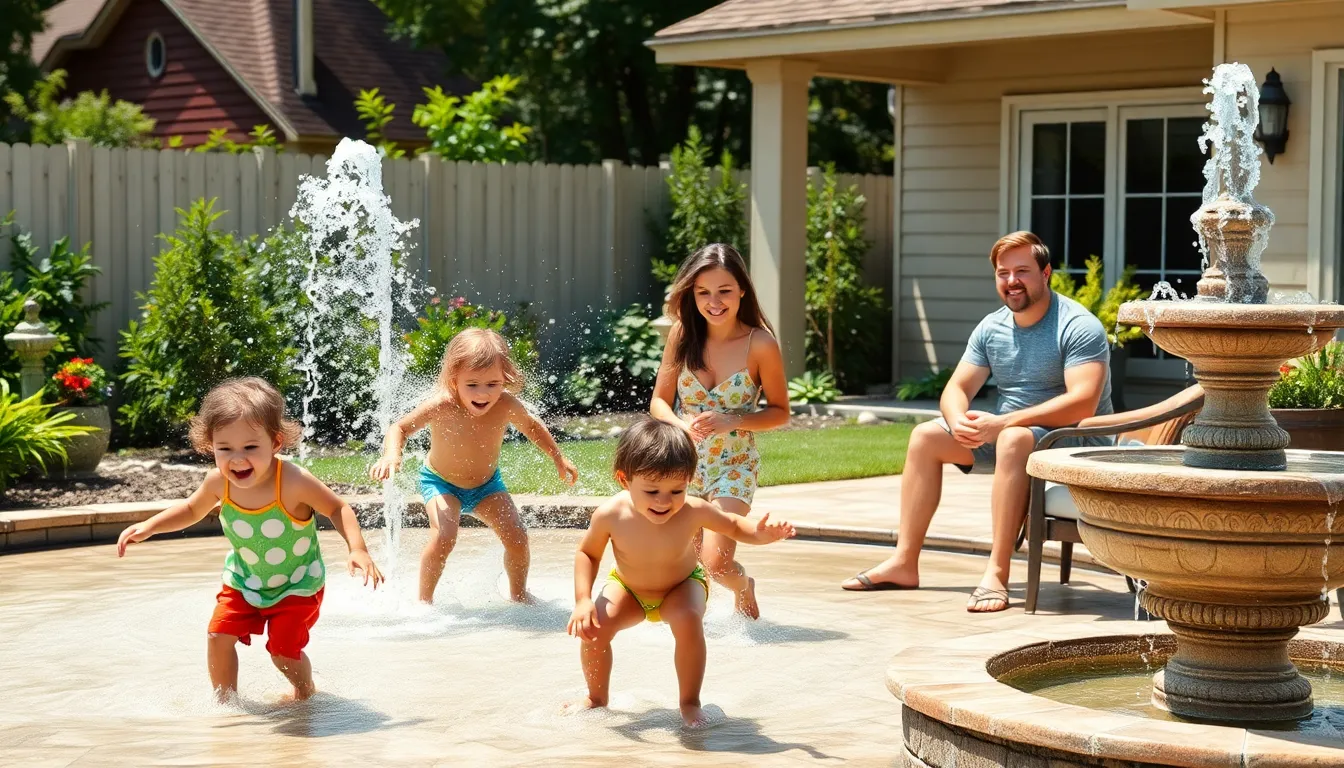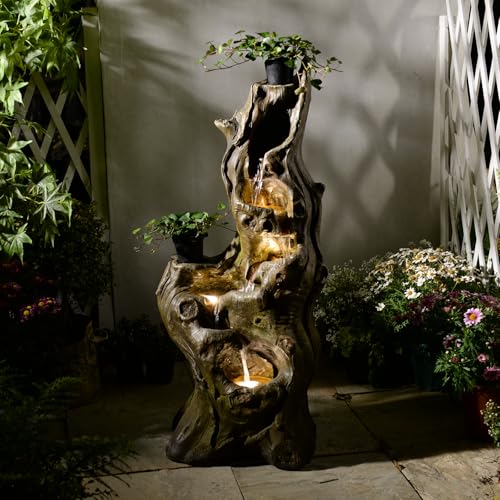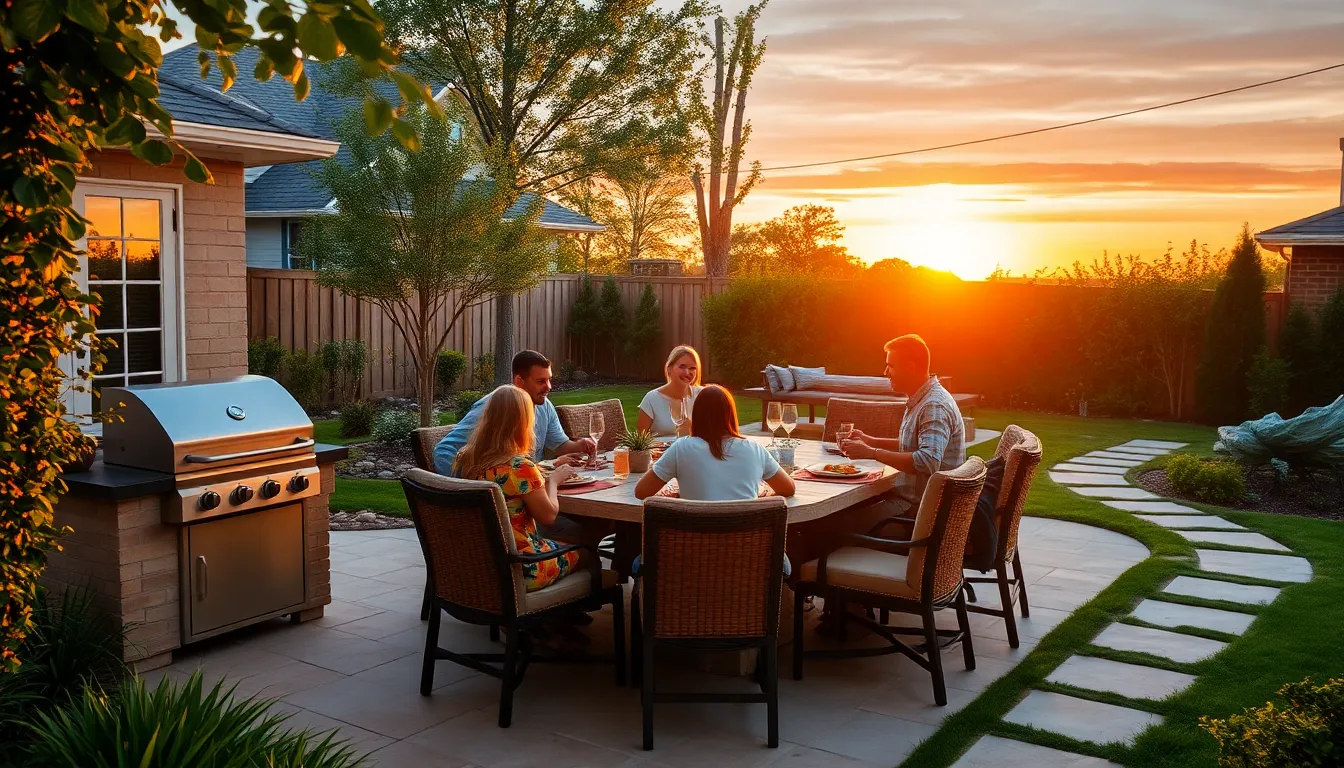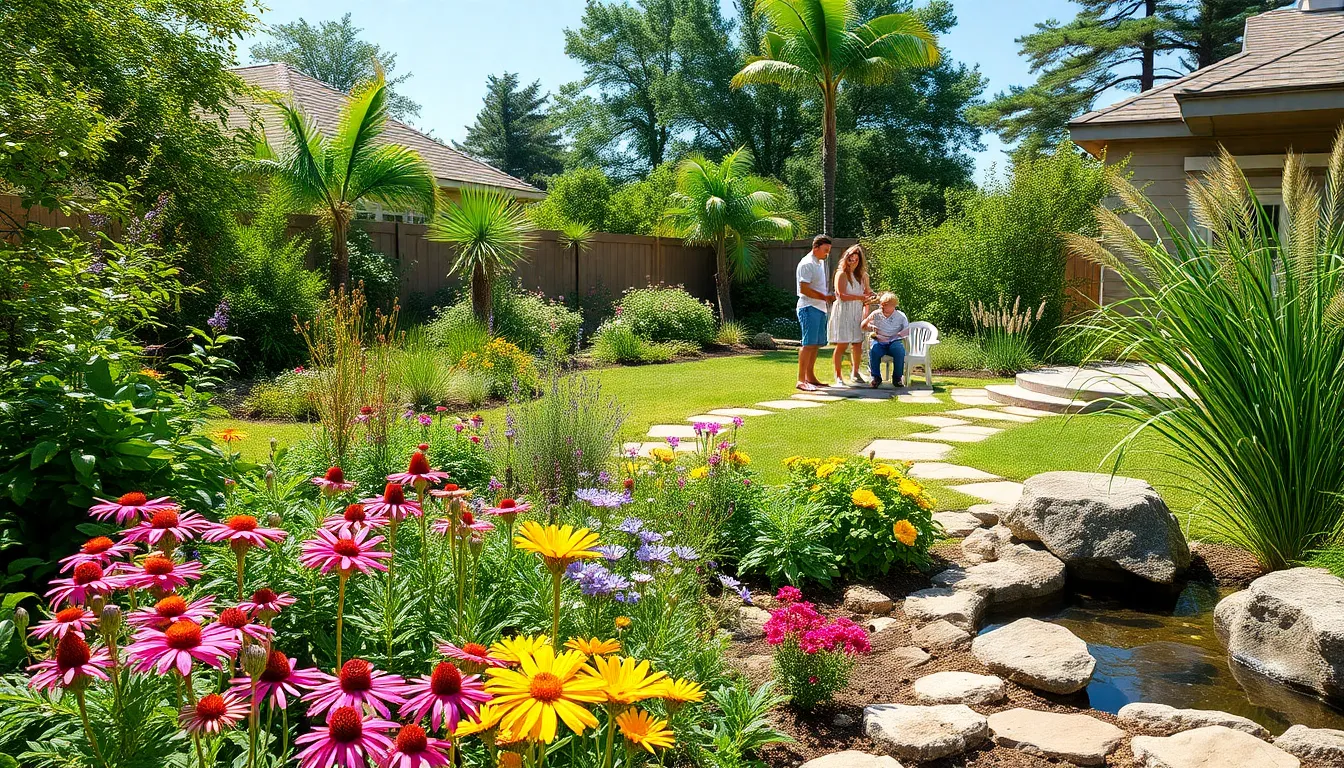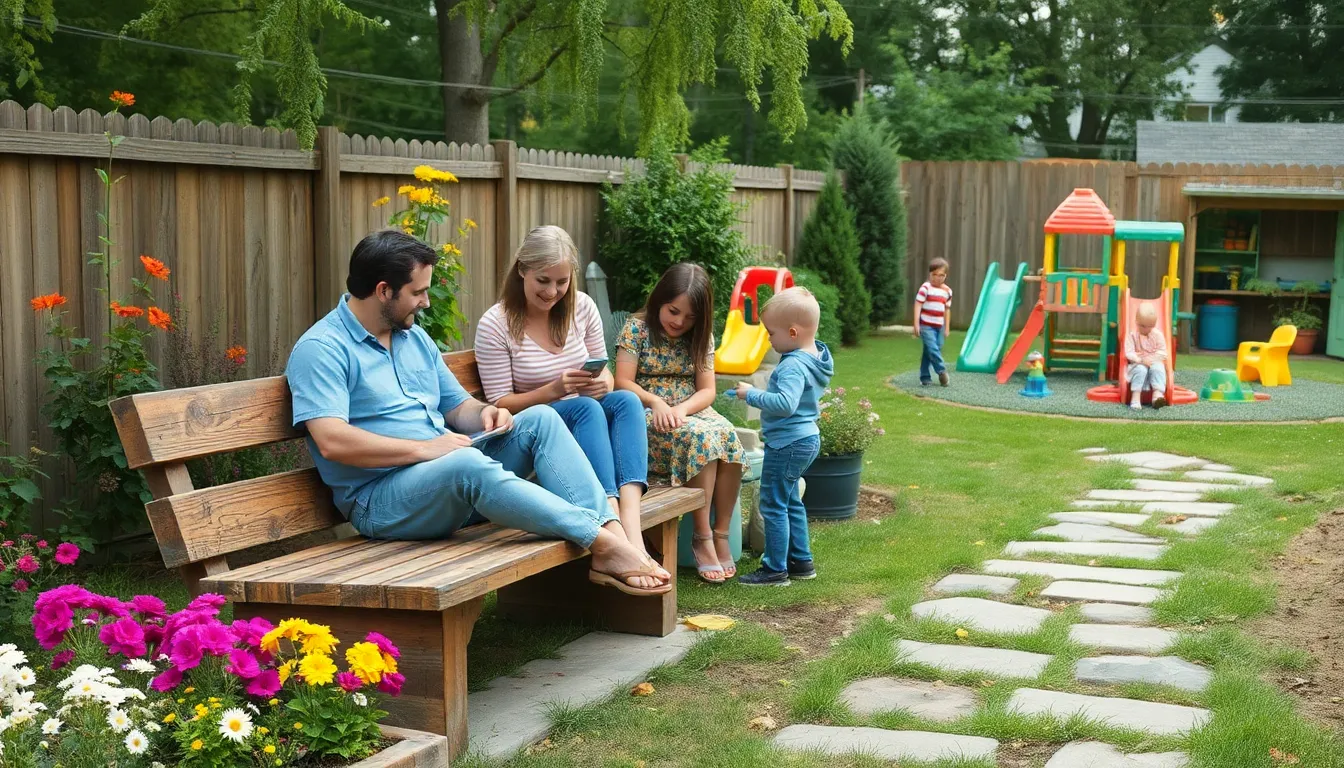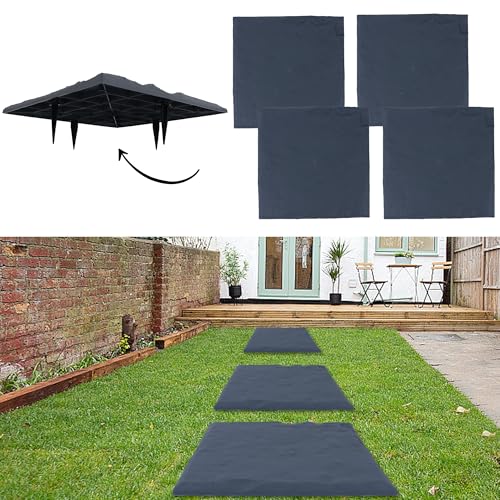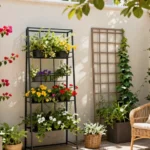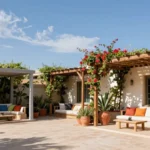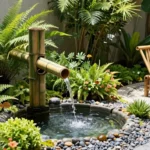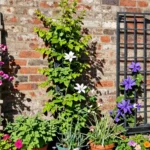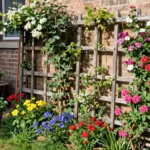We all dream of creating the perfect backyard sanctuary where our families can connect, play, and unwind together. Your outdoor space holds incredible potential to become a versatile hub that serves everyone’s needs – from energetic kids who need room to run to adults seeking peaceful relaxation zones.
The key to maximizing your backyard lies in thoughtful layout planning that balances functionality with beauty. We’ve discovered that the most successful family backyards incorporate distinct zones for different activities while maintaining a cohesive flow throughout the space.
Whether you’re working with a compact urban lot or a sprawling suburban yard, smart design choices can transform any outdoor area into your family’s favorite gathering spot. We’ll share proven layout strategies that create multiple living areas, maximize safety, and ensure your backyard becomes the neighborhood’s go-to destination for memorable moments.
Creating Zones for Different Family Activities
Dividing your backyard into distinct activity zones allows every family member to enjoy their own space while maintaining the overall flow of your outdoor sanctuary.
Designated Play Areas for Children
Playground zones should occupy the most visible area of your backyard so parents can easily supervise activities. We recommend placing swing sets, slides, and climbing structures on level ground with at least 6 feet of clearance on all sides for safety. Soft ground coverings like rubber mulch or artificial turf protect children during falls and reduce maintenance compared to traditional wood chips.
Sandbox areas work best in partially shaded spots where kids can play comfortably during hot summer days. Installing a cover keeps sand clean and prevents unwanted visitors like cats or wildlife from using the space. We suggest positioning sandboxes away from windows and doors to minimize sand tracking into your home.
Sports courts transform unused lawn space into active play zones for basketball, volleyball, or badminton. Portable net systems offer flexibility to change activities seasonally while permanent installations like basketball hoops create focal points that encourage daily physical activity.
Adult Relaxation Spaces
Seating areas become the heart of adult zones when positioned to take advantage of your yard’s best views and natural shade. We place outdoor furniture arrangements in corners or along fence lines to create intimate conversation spaces that feel separate from children’s play areas. Weather resistant materials like teak, aluminum, or all weather wicker ensure your investment lasts through multiple seasons.
Fire pit zones extend outdoor enjoyment into cooler months while creating natural gathering spots for evening conversations. Installing fire pits at least 10 feet from structures and overhanging branches ensures safety while allowing smoke to disperse properly. Surrounding seating with gravel or stone creates defined boundaries and reduces fire hazards.
Garden retreats offer peaceful spaces for reading, meditation, or quiet reflection through strategic plant placement and comfortable seating. We design these areas using tall shrubs, ornamental grasses, or privacy screens to create natural barriers from more active zones while maintaining visual connection to the overall space.
Multi-Purpose Entertainment Zones
Dining areas serve multiple functions from family meals to assignments spaces when positioned on level surfaces with adequate lighting. Expandable outdoor tables accommodate various group sizes while overhead structures like pergolas or umbrellas provide weather protection. We recommend locating dining zones within 20 feet of kitchen access for easy food service and cleanup.
Game zones adapt to different activities throughout the year using flexible flooring and storage answers. Paved areas work perfectly for board games, card tables, or create activities while remaining suitable for active games like cornhole or giant Jenga. Built in benches with storage compartments keep games organized and readily available.
Performance spaces encourage family creativity through dedicated areas for music, theater, or outdoor movie nights. We create these zones using natural amphitheater layouts with slight elevation changes or portable staging elements that store easily when not in use. String lights and portable sound systems enhance the entertainment experience while maintaining neighbor friendly volume levels.
Incorporating Safety Features Into Your Design
Creating a secure backyard environment requires thoughtful integration of safety elements that protect without compromising the beauty of your family space. We’ll explore essential features that keep everyone safe while maintaining an inviting outdoor atmosphere.
Child-Friendly Fencing and Barriers
Establishing clear boundaries protects children from potential hazards like pools or busy streets while giving parents peace of mind. We recommend installing secure fencing with a minimum height of 4 feet, though you should always check local regulations for exact requirements.
Self-closing and self-latching gates provide essential protection by preventing unsupervised access to dangerous areas. Choose gates that automatically swing shut and latch securely, even when children attempt to open them.
Visual supervision remains crucial, so select fence designs that allow parents to monitor children’s activities from different vantage points. Transparent or semi-transparent materials like picket fencing or decorative metal work well for maintaining sight lines while establishing boundaries.
Safe Surface Materials for Play Areas
Cushioning falls becomes our top priority when selecting surfaces for children’s play zones. Impact-absorbing materials like rubber mulch, artificial grass, or sand significantly reduce injury risks during active play.
Eliminating slippery surfaces prevents accidents, especially in high-traffic areas where children run and play. We suggest avoiding hard materials like concrete or natural stone in active play zones.
Weather-resistant, slip-resistant materials work best for patios and pathways where wet conditions might create hazardous walking surfaces. Textured pavers or composite decking provide better traction than smooth surfaces.
Plant selection affects safety too, so we avoid toxic or thorny varieties near play areas. Child-friendly options like azaleas, hydrangeas, or lavender add beauty without posing health risks to curious little ones.
Proper Lighting for Evening Use
Pathway illumination prevents trips and falls after dark, making evening outdoor activities safer for the whole family. Low-level or motion-activated lights work exceptionally well for walkways and play areas.
Strategic placement of string lights or spotlights enhances visibility around key features like play equipment, stairs, or elevated decks. These lighting answers also create ambiance for family gatherings while improving overall security.
Automatic lighting systems provide consistent illumination without requiring family members to remember switches. Solar-powered options offer energy-efficient answers that activate at dusk and provide reliable light throughout the evening hours.
Maximizing Small Backyard Spaces
Small backyards don’t have to limit our dreams of creating the perfect family outdoor space. Smart design strategies can transform even the tiniest yards into functional havens that serve multiple purposes while maintaining visual appeal.
Vertical Garden Answers
Vertical gardens revolutionize how we approach limited ground space by growing plants upward rather than outward. Wall-mounted planters transform bare fences into living walls that can house vegetables, herbs, or colorful flowers while adding natural privacy screens between property lines.
Trellises create structured growing spaces for climbing plants like beans, cucumbers, and flowering vines that maximize our gardening potential without consuming precious floor space. We can integrate these vertical elements into existing fence lines or patio walls to create layered planting schemes that feel lush and established.
Garden towers and hanging planters use overhead space effectively, allowing us to grow strawberries, cherry tomatoes, and cascading flowers at eye level for easy maintenance and harvesting. These elevated growing systems also keep plants away from ground pests while creating visual interest at multiple heights.
Compact Furniture Arrangements
Multi-functional furniture pieces serve double duty in small backyard spaces by providing seating, storage, and surface areas simultaneously. Foldable tables and stackable chairs allow us to reconfigure our outdoor space quickly for different activities, from intimate family dinners to larger gatherings.
Built-in bench seating along fence lines or deck edges creates permanent seating answers while offering hidden storage compartments for cushions, toys, and gardening supplies. We can position these benches to define conversation areas without overwhelming the available space.
Lightweight materials like aluminum and weather-resistant wicker help easy furniture rearrangement throughout the seasons, letting us adapt our outdoor rooms for summer barbecues or cozy autumn evenings. Nesting tables and ottomans that tuck away when not needed keep pathways clear while providing surface space when entertaining.
Multi-Level Deck Designs
Multi-level decking adds vertical dimension to flat backyards, creating distinct functional zones without requiring additional ground space. Upper deck levels serve as elevated dining areas or adult lounging spaces, while lower platforms accommodate children’s play zones or container gardens.
Tiered deck systems allow us to work with natural slopes and elevation changes, turning potential landscaping challenges into design opportunities that enhance our backyard’s visual appeal. Steps between levels double as casual seating areas and can incorporate built-in planters for herbs or seasonal flowers.
Integrated railings become functional elements by featuring wide caps that serve as plant shelves or casual dining surfaces for outdoor snacks and beverages. We can design these multi-level spaces to flow naturally from one area to another while maintaining clear sight lines for supervising children’s activities.
| Design Element | Space-Saving Benefit | Family Function |
|---|---|---|
| Vertical Gardens | Maximize growing space upward | Fresh herbs and vegetables for family meals |
| Compact Furniture | Flexible arrangements for different activities | Easy reconfiguration for play and entertaining |
| Multi-Level Decks | Create zones without using ground space | Separate areas for adult relaxation and children’s play |
Designing for Year-Round Family Enjoyment
Creating a backyard that serves our family’s needs throughout every season requires thoughtful material selection, strategic planting, and smart weather protection. We’ll maximize our outdoor investment by choosing elements that perform beautifully in all conditions.
Weather-Resistant Material Choices
Synthetic grass provides our families with a consistently green, low maintenance surface that handles heavy play while staying attractive year round. Children can enjoy this kid friendly option without creating muddy messes or dead patches that natural grass often develops.
Stone, brick, and pavers create durable foundations for our patios, walkways, and seating areas that withstand rain, heat, and freezing temperatures. These materials offer timeless appeal while requiring minimal upkeep compared to traditional wood decking.
Treated wood, metal, and weather resistant composites ensure our outdoor furniture and structures maintain their functionality and appearance through seasonal changes. We’ll invest in pieces that resist warping, cracking, and fading to avoid frequent replacements.
Waterproof cushions and outdoor fabrics protect our seating investments from moisture damage while providing comfort during family gatherings. Quick drying materials mean we won’t need to constantly move cushions indoors when weather threatens.
Seasonal Planting Strategies
Layered plantings with various textures, colors, and bloom times create ever-changing visual interest that evolves throughout the year. We’ll combine spring bulbs, summer perennials, fall foliage plants, and evergreen shrubs for continuous beauty.
Native and drought tolerant species minimize our water requirements while providing essential habitat for pollinators and birds that fascinate children. These plants naturally thrive in local conditions without extensive maintenance or irrigation systems.
Rotating vegetable beds and herb gardens engage our families in hands on gardening projects that reflect seasonal growing cycles. Kids learn responsibility while we enjoy fresh produce and herbs for family meals.
Four season trees and shrubs provide structural backbone to our industry design while offering changing seasonal displays. We’ll select varieties that provide spring flowers, summer shade, fall color, and winter interest through bark or berry displays.
Covered Areas for Rainy Days
Pergolas and gazebos extend our backyard usability during wet weather while creating defined outdoor rooms for dining and relaxation. These permanent structures add architectural interest while protecting furniture and family activities from precipitation.
Retractable awnings offer flexible weather protection that we can adjust based on current conditions and seasonal needs. We’ll position these coverings over key activity areas like dining spaces and children’s play zones for maximum utility.
Covered play areas ensure our kids’ outdoor activities continue regardless of weather conditions. Installing roofing over sandbox areas, swing sets, or create tables means family fun doesn’t stop when rain begins.
Outdoor heaters and fans enhance comfort in our covered spaces during extreme temperatures. These additions extend our outdoor season by making covered areas usable during cooler months and providing relief during hot summer days.
Adding Water Features for Family Fun
Water elements transform backyard spaces into captivating entertainment zones that provide refreshing relief during hot weather while creating memorable family experiences. These features serve dual purposes by improving aesthetic appeal and offering interactive play opportunities for children and adults alike.
Splash Pads and Kiddie Pools
Splash pads create excellent safe water playground areas for young children, featuring ground level water jets and sprays that eliminate deep water hazards while keeping kids cool and entertained. These installations blend seamlessly with grassy play areas, enabling continuous parental supervision while children transition between various outdoor activities.
Kiddie pools complement splash pad installations by providing shallow water environments where toddlers can safely splash and develop motor skills through sensory play experiences. We recommend positioning these water play zones near existing entertainment areas to maximize supervision opportunities and create cohesive activity flows.
Safety considerations make splash pads particularly suitable for families seeking low maintenance water elements without traditional pool risks. These features require minimal upkeep while providing maximum entertainment value, making them cost effective additions to family oriented backyard designs.
Decorative Fountains and Ponds
Fountains add tranquility and natural beauty to backyard layouts, creating sensory experiences through flowing water sounds and visual appeal that enhance relaxation spaces. Small decorative fountains work effectively as focal points within garden nooks or positioned near seating areas where families gather for quiet conversations.
Naturalistic water gardens and koi ponds introduce wildlife elements and biodiversity opportunities that become interactive learning points for curious children. These features encourage nature observation while providing peaceful environments for family reflection and outdoor education experiences.
Safety measures remain crucial when incorporating ponds into family backyards, requiring shallow edge designs or protective barriers that allow enjoyment without compromising child safety. We suggest consulting with industry professionals to ensure proper installation that balances aesthetic goals with family protection needs.
Swimming Pool Integration Ideas
Swimming pools represent coveted backyard features that provide family recreation opportunities and exercise options for household members of all ages. Modern pool designs integrate seamlessly with additional water elements to create comprehensive aquatic entertainment zones.
| Pool Integration Feature | Family Benefit | Safety Consideration |
|---|---|---|
| Cascading waterfalls | Visual and auditory ambiance | Proper drainage systems |
| Attached splash pads | Shallow areas for younger kids | Non-slip surface materials |
| Poolside paver patios | Seating for family gatherings | Heat-resistant material selection |
| Integrated safety fencing | Child protection with industry appeal | Self-closing gate mechanisms |
Combining pools with synthetic turf sports zones, multi-sport courts, or putting greens creates multifunctional spaces that cater to diverse family activities and encourage all-ages participation. These integrated designs maximize backyard utility while maintaining cohesive visual appeal throughout the outdoor environment.
Thoughtful zoning approaches ensure water features complement existing industry elements rather than overwhelming available space, creating balanced environments where families can enjoy both active recreation and peaceful relaxation opportunities.
Creating Outdoor Dining and Cooking Areas
We can transform our backyard into an entertaining paradise by designing dedicated spaces for family meals and food preparation. Strategic placement of dining and cooking zones maximizes convenience while creating natural gathering spots for memorable family moments.
Patio and Deck Placement
Positioning our patio near the back door provides easy access to indoor amenities while maintaining a seamless flow between interior and exterior spaces. We should orient these areas to take advantage of natural shade during peak dining hours or capture morning sunlight for breakfast gatherings.
Elevated decks create distinct zones that separate dining areas from play spaces while offering better views of the entire backyard. Natural materials like wood or stone blend beautifully with garden aesthetics and provide durability for years of family use.
Connecting different backyard zones with well-planned pathways ensures safe movement throughout the space while maintaining clear sight lines for supervising children. We can incorporate these walkways using matching materials to create visual continuity across our outdoor living area.
Outdoor Kitchen Essentials
Built-in grills anchor our cooking space and provide consistent performance for family barbecues and entertaining guests. Counter space surrounding the grill offers essential prep areas while built-in storage cabinets keep utensils and supplies organized and accessible.
Running water transforms outdoor cooking from a chore into a pleasure by enabling easy cleanup and food preparation. We should include a sink within arm’s reach of the cooking area along with weatherproof electrical outlets for small appliances.
Refrigeration options range from built-in units to portable coolers depending on our budget and space constraints. Adding a seating bar or island creates natural conversation areas where family members can gather while meals are being prepared.
Shade structures like pergolas or umbrellas provide essential comfort during hot summer cooking sessions while protecting our investment in outdoor appliances. These additions extend the usable hours of our outdoor kitchen throughout the day.
Fire Pit and Gathering Spaces
Fire pits create cozy focal points that draw families together for evening conversations and extend outdoor enjoyment into cooler months. We should position these features away from structures and overhanging branches while ensuring adequate seating surrounds the fire area.
Built-in stone pits offer permanent answers that integrate seamlessly with industry design while portable models provide flexibility for different occasions. Comfortable seating options include weather-resistant chairs or built-in benches that accommodate multiple family members.
Ambient lighting enhances the atmosphere around gathering spaces while providing necessary illumination for safety after dark. We can strategically place low-level lights along pathways leading to the fire pit area to ensure safe navigation.
These gathering spaces naturally encourage family bonding through activities like storytelling and roasting marshmallows while creating lasting memories for children and adults alike. Planning for adequate clearance and safety measures ensures we can enjoy these features worry-free throughout the year.
Incorporating Natural Elements and Landscaping
Natural landscaping transforms backyards into peaceful retreats that connect families with the environment while reducing maintenance demands. Trees provide essential shade and stress reduction benefits, while water features like ponds and waterfalls create soothing soundscapes that enhance relaxation zones.
Native Plant Selection
Choosing plants that naturally thrive in your region creates sustainable gardens that support local ecosystems. Native species adapt to local climate and soil conditions, requiring significantly less irrigation and maintenance than exotic alternatives. Coneflowers, milkweed, and native grasses establish robust perennial displays that return year after year with minimal intervention.
Supporting local wildlife becomes effortless when we select indigenous plant varieties. These plants provide essential habitat and food sources for pollinators, birds, and beneficial insects that maintain ecological balance. Native perennials create more organic appearances than tropical or annual plants, blending seamlessly with surrounding landscapes.
Regional climate considerations determine which native species will flourish in our backyards. Plants that grow naturally in one area may struggle or fail in different climates, making local selection crucial for long term success. Consulting local extension offices or native plant societies helps identify the best options for exact growing conditions.
Garden Bed Arrangements
Creating naturalized garden beds requires abandoning rigid geometric patterns in favor of organic clustering. Plant arrangements should mimic wild growth patterns by grouping species in irregular drifts and clumps rather than straight lines or perfect circles. This approach allows plants to interact naturally while creating visual interest through varied textures, colors, and heights.
Mixing different plant sizes and forms organically helps gardens blend into existing landscapes. Layering tall shrubs behind medium perennials and low groundcovers creates depth and visual complexity that feels unforced. Natural mulch, leaf litter, and deliberately “messy” areas with sticks or native shrubs provide wildlife habitat while improving biodiversity.
Allowing some garden areas to remain less manicured supports local network health. These spaces become refuges for beneficial insects, small mammals, and birds that contribute to garden health through natural pest control and pollination services.
Lawn Alternatives for High Traffic Areas
Prairie lawns featuring native wild grasses and wildflowers handle foot traffic better than traditional turf. These meadow style alternatives support native ecosystems while providing durable surfaces for family activities. Wild grass varieties establish deep root systems that resist wear and recover quickly from use.
Groundcover alternatives like clover or moss tolerate heavy use while requiring less maintenance. These options create soft, resilient surfaces that children can play on safely while eliminating the need for frequent watering and chemical treatments. Clover particularly excels in high traffic zones due to its natural durability and self repairing properties.
Designated hardscaped pathways using natural stone preserve planted areas from excessive wear. Creating defined routes through gardens and activity zones protects sensitive plants while providing stable walking surfaces. Locally sourced materials maintain the natural aesthetic while offering practical answers for heavily used areas.
Budget-Friendly DIY Layout Solutions
Creating our dream family backyard doesn’t require very costly when we focus on smart, cost-effective strategies. We’ll maximize our outdoor investment through creative repurposing, strategic phasing, and affordable hardscaping choices.
Repurposed Material Projects
Old stones and bricks transform into stunning pathways and natural fencing that gives our backyard that coveted “been here forever” appearance. We can source these materials from construction sites, demolition projects, or local classifieds at a fraction of new material costs. Reclaimed wood becomes raised garden beds, play structures, or rustic benches that add character while supporting our family activities.
Pallets offer incredible versatility for DIY projects like vertical planters, outdoor furniture, or even small playhouses that spark children’s imagination. We’ll find these materials are often free from local businesses and create unique features that new purchases can’t match. Broken concrete pieces work perfectly for creating stepping stone paths or retaining walls that blend seamlessly into our natural industry design.
Phased Implementation Strategies
Starting with essential zones allows us to spread costs over time while enjoying immediate benefits from our backyard improvements. We recommend beginning with a large grassy area for running and sports activities, then adding imaginative play zones and garden paths as budget permits. This approach lets us prioritize safety features first, especially when avoiding expensive installations like pools until we’re ready for proper supervision.
Phase one focuses on basic planting and establishing our primary activity areas using drought-friendly plants that mimic an “English Country meets California” aesthetic. Later phases can include water elements, tree swings, or dedicated playhouses that enhance our family’s outdoor experience. We’ll customize each phase based on our children’s growing needs and seasonal budget availability.
Cost-Effective Hardscaping Options
Stone paths and brick fences created from reclaimed materials provide durable, low-maintenance answers that enhance both functionality and visual appeal. We can build DIY patios using these salvaged materials for outdoor dining and entertainment areas that rival expensive professional installations. These hardscaping elements require minimal upkeep while supporting heavy family use throughout the seasons.
Synthetic grass offers long-term savings compared to natural lawn maintenance, especially in high-traffic play areas where children’s activities would damage traditional turf. Modular sports courts provide versatile surfaces for basketball, tennis, or general play without the ongoing costs of lawn care or frequent repairs. We’ll invest in these permanent features knowing they’ll serve our family for years while reducing water bills and maintenance time.
Planning for Future Family Growth
Smart families design their outdoor spaces with tomorrow in mind. We’ve learned that the most successful backyard layouts anticipate changing needs while remaining functional throughout every stage of family life.
Adaptable Design Elements
Layered landscaping creates the foundation for a backyard that ages gracefully. We recommend mixing textures and colors to achieve that “been here forever” ambiance that brings natural beauty while offering flexibility for future modifications. Vertical gardens maximize space efficiency and serve dual purposes as children grow from needing play areas to wanting gardening responsibilities.
Pergolas and shaded nooks transform their function as your family evolves. These structures start as quiet reading retreats for parents and become assignments stations or teen hangout spots over time. Synthetic turf provides durable surfaces that withstand heavy use while adapting to different sports and activities as kids develop new interests.
Multi-use spaces offer the greatest return on your layout investment. Open lawns transition seamlessly from toddler play areas to teen sports fields to outdoor family gathering spots. Large grassy areas dedicated to running and sports allow children of various ages to play safely while maintaining their appeal for adult activities.
Expandable Layout Concepts
Modular elements give you the power to reconfigure your space without major renovations. We suggest incorporating movable furniture, raised garden beds, and portable play equipment that rearrange easily as family needs change. Stone or brick pathways create natural expansion opportunities for future guest houses or garden extensions.
Zoned layouts work best when they’re designed for growth rather than current needs alone. Planning pathways and activity areas that extend or repurpose saves important renovation costs later. Water features like fountains or splash pads offer scalable options that adjust to changing family preferences and safety considerations.
Recreational courts maximize your investment through versatility. Basketball courts double as shuffleboard areas, while open sport surfaces accommodate everything from hopscotch to volleyball nets. These durable installations grow with your family’s athletic interests.
Long-Term Maintenance Considerations
Drought-friendly plants reduce upkeep while maintaining year-round appeal. We prioritize low-maintenance species that thrive in your climate zone, minimizing water usage and gardening time. Simple plant selections prevent chaotic garden spaces that become overwhelming to maintain as your family gets busier.
Durable materials like stone, brick, and pavers age beautifully with minimal intervention. These hardscaping choices withstand heavy family use while requiring only occasional cleaning or minor repairs. Artificial turf delivers excellent durability for high-traffic play areas without the ongoing maintenance demands of natural grass.
Strategic material choices reduce long-term costs and effort. Weather-resistant composites and treated woods maintain their appearance through seasons of family activities. Thoughtful plant placement near low-maintenance hardscaping creates attractive borders that won’t require constant trimming or replacement.
Conclusion
Creating your perfect family backyard sanctuary is an achievable goal that brings lasting value to your home and family life. We’ve explored how thoughtful planning transforms ordinary outdoor spaces into functional entertainment hubs that grow with your family’s changing needs.
The key lies in balancing safety with fun while maximizing every square foot of available space. Whether you’re working with a compact yard or expansive acreage your outdoor area can become the heart of family memories.
Start with one zone and build gradually. Your family’s dream backyard doesn’t need to happen overnight – it just needs to happen. With these proven strategies you’re ready to create an outdoor space that’ll serve your family for years to come.
Frequently Asked Questions
What are the key zones to include in a family-friendly backyard layout?
A well-designed family backyard should include distinct zones: designated play areas for children with safe equipment and visibility for supervision, adult relaxation spaces with comfortable seating and fire pits, and multi-purpose entertainment areas that can serve as dining spaces, game zones, and performance areas. Each zone should maintain a cohesive flow while serving specific family needs.
How can I make my backyard safe for children without compromising aesthetics?
Install child-friendly fencing with self-closing, self-latching gates to protect from hazards. Use impact-absorbing surface materials like rubber mulch or artificial grass in play areas. Add proper lighting with low-level or motion-activated lights for pathways and strategic placement around play equipment to enhance evening visibility and safety.
What are the best strategies for maximizing small backyard spaces?
Utilize vertical gardens with wall-mounted planters and trellises to conserve ground space. Choose compact, flexible furniture that can be easily reconfigured for different activities. Consider multi-level deck designs to create distinct functional zones without requiring additional ground space while maintaining clear sight lines for child supervision.
How can I design my backyard for year-round family enjoyment?
Select weather-resistant materials like synthetic grass, durable stone, brick, and treated wood. Implement seasonal planting strategies with layered plantings and native species. Create covered areas like pergolas and gazebos for rainy day use, add retractable awnings for flexible weather protection, and install outdoor heaters and fans for temperature control.
What water features work best for family backyards?
Splash pads and kiddie pools provide safe, interactive play areas with low maintenance requirements. Decorative fountains and ponds offer tranquil, educational benefits but require proper safety measures. Swimming pools can be integrated with other water features and sports zones to create multifunctional spaces that cater to diverse family activities.
Where should I position outdoor dining and cooking areas?
Position patios and decks for easy access from the house and optimal sunlight exposure. Include built-in grills, counter space, and running water in outdoor kitchens for maximum convenience. Add shade structures to enhance comfort during cooking sessions and strategically place fire pits with proper seating arrangements for family gatherings.
How can I create a family backyard on a budget?
Repurpose materials like old stones, bricks, and pallets for DIY projects. Implement phased construction, prioritizing essential zones and safety features first. Use cost-effective hardscaping with reclaimed materials for pathways and patios. Consider synthetic grass and modular sports courts for long-term savings and versatility while spreading costs over time.
How do I plan my backyard layout for future family growth?
Design with adaptability in mind using layered landscaping and vertical gardens that evolve as children grow. Choose modular elements like movable furniture and portable play equipment for easy reconfiguration. Select drought-friendly plants and durable materials that require minimal maintenance, ensuring the space remains functional as family dynamics change over time.

